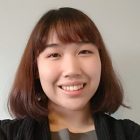MathWorks
Maz Abulnaga is a PhD candidate whose work is changing the way researchers and physicians study the placenta with the goal of improving health outcomes for mothers and babies. Specifically, Maz develops algorithms for studying the placental shape in fetal magnetic resonance imaging, an imaging modality that is being used to track the health and function of the placenta, identify pathology, and support patient outcomes. Maz has made several contributions to the theoretical and algorithmic foundations of volumetric geometry processing and has successfully applied his models to clinical research of the placenta. With the support of his MathWorks Fellowship, Maz will develop geometry processing and machine-learning algorithms to quantify placental shape and functional changes throughout pregnancy, which are necessary to identify pathology and plan pregnancy outcomes. He has recently developed a novel approach to provide a standardized representation of placental shape that is being used by researchers globally. He envisions developing a set of open-source tools to enable clinical studies to improve our understanding of placental and fetal development with the goal of revolutionizing fetal-maternal health.
https://engineering.mit.edu/wp-content/uploads/2023/02/Mazdak_Abulnaga_MathWorks-2022.jpg
Website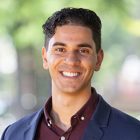
Maz Abulnaga
Electrical Engineering and Computer Science https://engineering.mit.edu/fellows/maz-abulnaga/Bernardo is a PhD student in mechanical engineering whose research examines the synthesis of robust strategies for grasping and dexterous manipulation. Specifically, he is examining the problem of caging, a geometric property by which a set of fingers manipulate an object by trapping it rather than immobilizing it. He has developed an explicit optimization approach to formulate the caging condition as a convex mixed-integer optimization problem. This was the first of its kind, since caging had previously been approached as either a topological or computational geometry problem. More recently, he has extended the formulation to synthesizing grasping strategies with certificates of correctness, a problem that is of high interest today both in academia and industry. He uses MATLAB’s Robotics Toolbox, Optimization Toolbox, and Deep Learning Toolbox as the main prototyping interface. In addition, his work has resulted in several tools that have been made open to the robotics and MathWorks communities, including ABB ROS Interface, Contact-TrajectoryOptimization Models, and Certified Grasping Toolbox. Bernando earned a BSc in electronics engineering from Universidad Simón Bolívar, Venezuela
https://engineering.mit.edu/wp-content/uploads/Aceituno-Bernardo.jpg
Website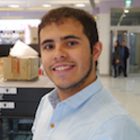
Bernardo Aceituno - Cabeza
Mechanical Engineering https://engineering.mit.edu/fellows/bernardo-aceituno-cabeza/Sayed Saad Afzal is a PhD candidate whose research interests lie in developing novel low-cost and low-power distributed sensor technologies and systems for climate monitoring, environmental sustainability, and food security. Specifically, Sayed is working on ocean sensor technologies to monitor vital signs such as biodiversity and carbon balance. With the support of a MathWorks Fellowship, he will advance his successful work on an underwater sensor utilizing backscatter, a technique that enables communication with 1 million times less power than existing systems. He recently used this technology to build one of the world’s first battery-free underwater cameras, enabling long-duration monitoring in remote ocean locations. MathWorks tools such as MATLAB’s DSP System Toolbox and Signal Processing Toolbox are crucial tools in his research. Sayed has already made notable technological contributions with implications for climate monitoring, food security, and ecology. His future work has tremendous potential to advance sensor technologies, supporting innovative research and a sustainable future.
https://engineering.mit.edu/wp-content/uploads/2023/10/Afzal_Saad-Sayed_mathworks2023_headshot.jpg
Website
Sayed Saad Afzal
Electrical Engineering and Computer Science https://engineering.mit.edu/fellows/sayed-saad-afzal/Shashank is a PhD student in mechanical engineering whose research primarily focuses on the development of reduced-order, rate-dependent methods for a variety of granular intrusion problems, such as meteorite impacts and animal and vehicular locomotion in sands and deserts (a field referred to as terramechanics). He uses large-scale, detailed numerical simulations to understand the physics of such scenarios, which in turn allows him to develop robust reduced-order models that can be run in real time. He uses MATLAB for various purposes in his research, most importantly for the implementation of reduced-order models for granular intrusion, allowing for the real-time simulation of diverse intrusion scenarios with different system properties and intruder shapes. Shashank earned a BTech in mechanical engineering fromIITGandhinagar, India and an SM in mechanical engineering from MIT.He also worked as a scientist at the Defense Research and Development Organization, India before joining MIT
https://engineering.mit.edu/wp-content/uploads/Agarwal-Shashank.jpg
Website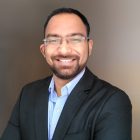
Shashank Agarwal
Mechanical Engineering https://engineering.mit.edu/fellows/shashank-agarwal/Frederick Ajisafe is a PhD student in aeronautics and astronautics whose research aims to apply space technologies and systems engineering techniques to address challenges on Earth. As a MathWorks Fellow, he will conduct a project evaluating the benefits of satellite-based Earth observation tools in local methane monitoring, as part of policies to address climate and air quality concerns. The project, centered on the Seropédica landfill in Rio de Janeiro, employs an Environment-Vulnerability-Decision-Technology Framework (EVDT) to draw system-level connections among the natural environment, its consequences for human and socioeconomic vulnerability, the role of human decision-making, and the ability of technology to resolve gaps in a decision-maker’s knowledge of the environment. Frederick will create MATLAB-based models to create simulations and analyses guided by EVDT. Frederick’s work has the potential to offer a novel system engineering framework for holistically analyzing the benefits of sensing technologies applied to methane generation in urban landfills, as well as a valuable example of how interdisciplinary modeling packages can be used to inform real-world policymaking.
https://engineering.mit.edu/wp-content/uploads/2024/10/headshot_Ajisafe_Frederick_Mathworks_AeroAstro_2025.jpg
Website
Frederick Ajisafe
Aeronautics and Astronautics https://engineering.mit.edu/fellows/frederick-ajisafe/Mohammad is a PhD student in civil and environmental engineering whose research is focused on explaining and predicting biodiversity changes using mathematical models. Specifically, his goal is to provide closed-form solutions using computational methods in order to skip the impossible task of simulating all possible parameter values and combinations and to establish rigorous and testable estimates about the probability of persistence of species. He is developing his own code and integrating libraries from MATLAB with the goal of generating a computational package that will allow researchers to work with different ecological models, derive the range of parameter values (or combinations of parameter values) compatible with the persistence of a given species in an ecological system, and estimate the probabilities (or risks) of species extinctions or species invasions. Mohammad earned a BS in mathematics and a BS in electrical engineering from Rensselaer Polytechnic Institute and an SM in civil and environmental engineering, an SM in electrical engineering and computer science, and an SM in computation for design and optimization from MIT.
https://engineering.mit.edu/wp-content/uploads/Aladwani-Mohammad.jpg
Website
Mohammad AlAdwani
Civil and Environmental Engineering https://engineering.mit.edu/fellows/mohammad-aladwani/Ethan Almquist is a graduate student in mechanical engineering whose research aims to solve critical challenges in naval ship design and power system diagnostics. Specifically, he is working to create energy-efficient systems that minimize electrical consumption and maximize ship performance. As a MathWorks Fellow, Ethan will develop a behavioral simulation method to permit much faster than real-time emulation of detailed power streams for shipboard power plants. His approach utilizes data from nonintrusive power monitoring systems to model both steady-state and transient events at the power level without the computational demands of traditional numerical simulations. His project will enable rapid, highly detailed studies of shipboard power flow, fuel consumption, and operational capability based on actual or hypothetical mission profiles at low computational cost. Ethan’s work relies significantly on MATLAB and Simulink and demonstrates the power of these tools to solve critical problems in modern ship design. In addition to delivering valuable tools and methods for ship design, Ethan’s fast-solver approach has the potential for broad applications in other domains, including renewable energy and microgrid operation.
https://engineering.mit.edu/wp-content/uploads/2024/10/headshot_Almquist_Ethan_Mathworks_MechE_2025.jpg
Website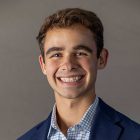
Ethan Almquist
Mechanical Engineering https://engineering.mit.edu/fellows/ethan-almquist/Jasmine Jerry Aloor is a PhD candidate in robotics, aerospace engineering, and artificial intelligence whose research seeks to address the challenge of balancing efficiency and fairness in multi-agent teams using reinforcement learning. As a MathWorks Fellow, Jasmine will pursue research exploring motion planning and control for dynamic multi-agent systems, with a special emphasis on safety, robustness, and human interactivity. Jasmine’s past research endeavors include work in imitation learning for social navigation, control barrier functions, and coverage path planning; recent projects include the development of a safe and socially aware motion planning method using imitation learning for general aviation aircraft in multi-aircraft shared airspace and the design and testing of an improvised box-wing micro air vehicle. MATLAB supports design, modeling, and analysis across her research interests. Jasmine’s innovative work has the could improve machine learning and autonomous systems and help them realize their full potential.
https://engineering.mit.edu/wp-content/uploads/2023/10/Aloor_Jasmine_mathworks2023_headshot.jpg
Website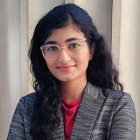
Jasmine Jerry Aloor
Aeronautics and Astronautics https://engineering.mit.edu/fellows/jasmine-jerry-aloor/Jasmine Jerry Aloor is a PhD candidate in aeronautics and astronautics whose research bridges aerospace engineering, robotics, AI, and control. Supported by her second MathWorks Fellowship, she will pursue studies of system- and fleet-level objectives, including fairness and efficiency for highly decentralized execution settings, such as those enabled by multi-agent reinforcement learning (MARL) methods. Her previous projects include studies examining whether agents can learn to be fair, especially in scenarios where agents must safely navigate to perform a coverage task or get into formation. Jasmine demonstrated that by training agents using min-max fair assignments, agents can learn to balance the tradeoff between efficiency and fairness. The next steps of her research involve determining how to effectively combine the safety guarantees provided by control-theoretic techniques with MARL-based planning methods for aircraft trajectory waypoint generation. MathWorks products, including the Aerospace Blockset Toolbox and Simulink, are essential to her work. Jasmine’s research has the strong potential to advance the field of aerial mobility and to help ensure the efficient, safe, and equitable integration of autonomous aircraft into the National Airspace System.
https://engineering.mit.edu/wp-content/uploads/2024/10/headshot_Aloor_Jasmine_Jerry_Mathworks_AeroAstro_2025.jpg
Website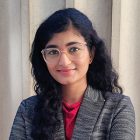
Jasmine Jerry Aloor
Aeronautics and Astronautics https://engineering.mit.edu/fellows/jasmine-jerry-aloor-2/Abtin Ameri is a PhD candidate whose research interests lie at the intersection of quantum computing and plasma physics, with the goal of advancing the use of fusion energy. Specifically, Abtin is working on the development of quantum algorithms for the numerical simulation of fusion reactors by identifying candidate problems suitable for a quantum computing approach and exploring how to mathematically frame those problems to maximize the added efficiency that quantum computers may offer. With the support of a MathWorks Fellowship, Abtin will investigate whether the problem of determining plasma stability in fusion reactors can be efficiently computed on quantum platforms. MATLAB has been an indispensable tool at each step of his work. Abtin’s ambitious research, if successful, will be the first example of a quantum algorithm with immediate relevance to fusion research and could expedite progress toward putting fusion energy on the grid, contributing to sustainable energy solutions and mitigating the impacts of climate change.
https://engineering.mit.edu/wp-content/uploads/2023/10/Ameri_Abtin_mathworks2023_headshot.jpg
Website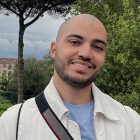
Abtin Ameri
Nuclear Science and Engineering https://engineering.mit.edu/fellows/abtin-ameri/Pasquale is a PhD student in aerospace engineering. He is developing general-purpose tools for estimation that are robust to corrupted information and adversarial attacks, run in real-time, and require minimal tuning. His interests include safe and trustworthy perception with application to single and multi-robot autonomous systems. He uses MATLAB on a regular basis, including the Computer Vision Toolbox and Robotics System Toolbox for his work on robust estimation. He earned his SB in computer science from University of Pisa, Italy, an SM in embedded computing systems from Scuola Superiore Sant’Anna of Pisa, Italy and an SM in aeronautics and astronautics from MIT. Prior to MIT, he was a research scientist at the United Technologies Research Center, Ireland.
https://engineering.mit.edu/wp-content/uploads/Antonante-Pasquale.jpg
Website
Pasquale Antonante
Aeronautics and Astronautics https://engineering.mit.edu/fellows/pasquale-antonante/Nicolas is a PhD student in electrical engineering and computer science whose research focuses on medical imaging technology. He is trying to solve challenging MRI problems by creating and distributing the hardware and computational tools needed for simultaneous optimization of coil geometries, encoding field patterns, and received-signal reconstruction algorithms. He has observed that the steps, or modules, that make up most MRI sequences often have conflicting patient-specific field pattern requirements. Nicolas developed a general MATLAB-based framework for use at scan time that optimizes the field patterns for each sequence module. The framework reads patient rapid-scan data from the imager, exploits the coil pre-characterization and convex formulations to efficiently compute sets of sequence-module optimized coil currents, and then transfers the coil currents sets, along with triggering conditions, to the coil driver array. Nicolas earned an SB in electrical engineering from MIT.
https://engineering.mit.edu/wp-content/uploads/Arango-Nicolas.jpg
Website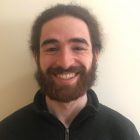
Nicolas Arango
Electrical Engineering and Computer Science https://engineering.mit.edu/fellows/nicolas-arango/Attias Ariel is a PhD candidate whose research is focused on designing resilient structures in urban environments that are better able to withstand natural disasters. With the support of a MathWorks Fellowship, he will develop a novel approach, assessing the resilience of urban structures by combining finite elements and statistical physics principles. This strategy characterizes fracture at the element level using spins, describing fracture in a statistical ensemble, effectively bridging the gap between brittle fracture theory and statistical physics. Through his research, which takes extensive use of MathWorks tools, Attias is providing solutions to several computational challenges associated with structural resilience, including fracture initiation, fracture branching, computational efficiency, and in-situ prediction of fracture propagation. His goals include creating a new framework for considering the fragility of structures and the analysis of their life cycle. Attias’s research could have a significant impact on design for the structures of tomorrow, ultimately improving the safety and sustainability of our communities.
https://engineering.mit.edu/wp-content/uploads/2023/10/Ariel_Attias_mathworks2023_headshot.jpg
Website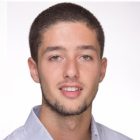
Attias Ariel
Civil and Environmental Engineering https://engineering.mit.edu/fellows/attias-ariel/Toros Arikan is a PhD candidate whose interdisciplinary work integrates signal processing, machine learning, and computational imaging to significantly expand the capabilities of sensing systems for acoustic, radio frequency (RF), and optical modalities. With the support of a MathWorks Fellowship, Toros will pursue innovative research that takes a new, and potentially highly useful, view of system design. Traditionally, system designs are based on relatively low-dimensional models. Toros’s work, by contrast, embraces high-dimensional models and finds potential in that complexity for better performance and surprising new capabilities. One example is the presence of unknown complex obstacles and reflecting structure in physical environments that can improve object localization and scene imaging performance. MATLAB tools play a central role in Toros’s research, serving as his algorithm prototyping and experimental data analysis environment. The tools, methods, and insights emerging from this work hold important potential for future research and applications, including the acoustic and RF communities. To help realize these new possibilities, Toros will make the resulting tools of his research widely available through the MathWorks File Exchange.
https://engineering.mit.edu/wp-content/uploads/2023/02/Arikan-Toros_MathWorks-2022.jpg
Website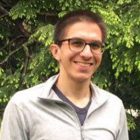
Toros Arikan
Nuclear Science and Engineering https://engineering.mit.edu/fellows/toros-arikan/Bastien F. G. Aymon is a PhD candidate in mechanical engineering whose research is located at the intersection of mechanics, soft active materials, and bioadhesives. Specifically, Bastien is working to develop super-biocompatible implants by studying and engineering their mechanics and biology. As a MathWorks Fellow, Bastien will address the challenge of the foreign-body response (FBR), an immune reaction leading to the development of a fibrotic encapsulation around the implant, with the goals of producing guidelines for durable, fibrosis-free implantation and enhancing implant longevity. Bastien’s project leverages mechanical modifications of a previously developed anti-fibrotic adhesive film to study the critical parameters influencing the FBR. His preliminary experiments have shown how changes in immune cell populations correlate with the level of mechanical stresses. Next, he will use single-cell technologies to elucidate the biological pathways associated with the fibrotic state. His work relies heavily on, and has offered valuable enhancements to, MathWorks products. Bastien’s research has strong potential to advance the design of next-generation biocompatible implants and contribute to the nascent field of mechanoimmunology.
https://engineering.mit.edu/wp-content/uploads/2024/10/headshot_Aymon_Bastien_Mathworks_MechE_2025.jpg
Website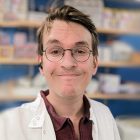
Bastien F. G. Aymon
Mechanical Engineering https://engineering.mit.edu/fellows/bastien-f-g-aymon/Akash Ball is a PhD candidate in chemical engineering whose research aims to use machine learning and computational chemistry to discover novel materials for applications in water desalination, industrial water treatment, and rare earth element recovery. Specifically, he is working to identify materials with unprecedented water permeation and ion-separation performance and creating models to explain how to optimize the transport properties of porous metal-organic frameworks (MOFs). MOFs are comprised of linkers and inorganic metal nodes; by combining them in novel ways or functionalizing linkers, it is possible to design vast numbers of novel materials. Akash’s current objectives are to uncover the chemical and geometric features governing water and ion transport in MOFs and to create machine-learning models that advance MOF design. MATLAB is a critical tool for his model design and results analysis. Ultimately, Akash hopes to develop predictive structure-property relationships for ion selectivity, enabling the design of MOFs for rare earth ion recovery and desalination/water purification. His research has the potential to help address the global shortage of freshwater reserves, impacting some four billion people.
https://engineering.mit.edu/wp-content/uploads/2024/10/headshot_Ball_Akash_Mathworks_SoE_2025.jpg
Website
Akash Ball
Chemical Engineering https://engineering.mit.edu/fellows/akash-ball/Taylor Elise Baum is a PhD candidate whose research interests lie in developing systems that enhance clinician decision-making processes for cardiovascular system management. Currently, Taylor is working on a closed-loop blood pressure control (CLBPC) system to improve blood pressure management in intensive care units and operating rooms. A MathWorks Fellowship will allow her to advance the system toward eventual human testing. Milestone achievements include her development of a physiologically based theoretical framework for the system; a cardiovascular state estimation method to inform control decisions; and an end-to-end hardware system for monitoring blood pressure and controlling vasoactive medications in swine. Notable is her method for cardiovascular state estimation based on the Windkessel model, which has improved accuracy and time resolution compared with current approaches. She is now leading preparations for upcoming animal testing, a crucial step toward human testing. Taylor makes extensive use of MathWorks tools and is pursuing research with strong potential to enhance clinical decision- making in cardiovascular medicine, leading to improved patient outcomes and future innovations in engineering applications for health care.
https://engineering.mit.edu/wp-content/uploads/2023/10/Baum_Taylor-Elise_mathworks2023_headshot.jpg
Website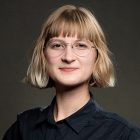
Taylor Elise Baum
Electrical Engineering and Computer Science https://engineering.mit.edu/fellows/taylor-elise-baum/Maanasa Bhat is a PhD candidate who is integrating interests in health, energy, and materials science to develop innovative new approaches to synthesis of nanomaterials. As a MathWorks Fellow, Maanasa is designing a flame-based synthesis process to manufacture nanomaterials for low-cost sensors and photocatalysts with a wide range of potential environmental and health applications. The goal of Maanasa’s work is to build a broader understanding of the physical and chemical mechanisms involved in the flame synthesis process. The aim is to strengthen connections between the input operating conditions and the composition and morphology of output products to achieve high controllability. MathWorks tools have been indispensable in this research. As her project progresses, Maanasa hopes to tailor the novel flame synthesis process she has developed for specific uses such as the detection of methane leaks, pollutant emissions in air, as well as breath diagnosis for hard-to-detect conditions such as endometriosis and fibroids.
https://engineering.mit.edu/wp-content/uploads/2023/02/Bhat-Maanasa_MechE_MathWorks-2022.jpg
Website
Maanasa Bhat
Mechanical Engineering https://engineering.mit.edu/fellows/maanasa-bhat/Harsh G. Bhundiya is a PhD candidate who is applying structural engineering, computational modeling, and design techniques to purse his interest in space structures. His work is ushering in a new paradigm for constructing large structures in orbit, called in-space manufacturing, with an enormous potential impact on space applications. Drawing on MathWorks tools, Harsh has reached exciting milestones, including the development of a path-planning framework called Bend-Forming, which enables the creation of paraboloids, isogrid columns, and other structural elements that can be linked together to form large structures such as RF reflectors and solar sails. As a MathWorks Fellow, Harsh will characterize the compression behaviors of these structures and study the effects of processing defects on their buckling response through experiments and nonlinear finite element analysis. Simulink and Simscape Multibody will play critical roles in this work. Harsh was pleased to share previous work on MathWorks File Exchange, and will continue to share his research, as he seeks to create a new generation of large space structures for diverse applications.
https://engineering.mit.edu/wp-content/uploads/2023/02/Bhundiya-Harsh_MathWorks-2022.jpg
Website
Harsh G. Bhundiya
Aeronautics and Astronautics https://engineering.mit.edu/fellows/harsh-g-bhundiya/Arittaya (Tiya) Boonkird is a PhD student in nuclear science and engineering who focuses on the exploration of quantum materials for applications in information and electrical devices. Her prior achievements include developing methodologies for evaluating topological materials, a large class of quantum materials, based on economic and environmental criteria, and identifying the top-200 candidates based on these sustainability considerations, as well as experimental work on the physical properties of two topological materials using X-ray scattering techniques. As a MathWorks Fellow, Tiya will explore promising material candidates for future terahertz devices and back-end-of-line interconnects in transistors. This involves employing first-principal calculations from physical properties, including Berry curvature dipole, and evaluating the electrical conductivity of nanowires. MATLAB facilitates many aspects of her work, including numerical simulations, data processing, and machine-learning implementation. Tiya has made seminal contributions to materials science, machine learning, and sustainability, and her ongoing work has the potential to advance quantum materials and next-generation energy and information applications.
https://engineering.mit.edu/wp-content/uploads/2024/10/headshot_Boonkird_Arittaya_Mathworks_NSE_2025.jpg
Website